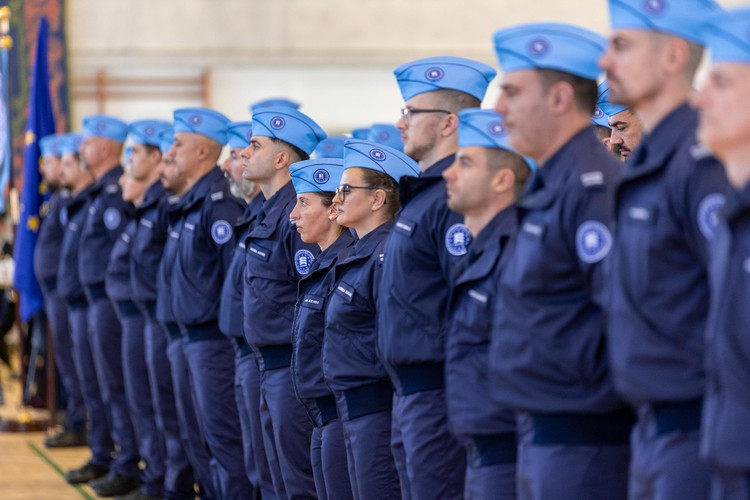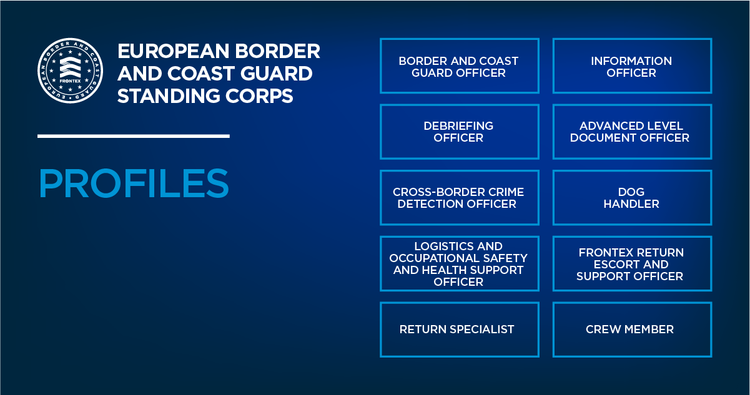For the first time, the EU has
its own uniformed service – the European Border and Coast Guard Standing Corps.
Trained by the best and equipped with the latest technology, the Standing Corps
is ready for challenges at the EU’s external borders, helping to ensure the
proper functioning of the European Union and the Schengen Area.
The operational work of the Agency includes assisting
Member States with border control, comprising border checks and border
surveillance. Frontex also supports Member States with migration management and
return activities, it helps national authorities carry out coast
guard functions, making border crossings safe and smooth for all travellers, and
assists in fighting cross-border crime.
Frontex Standing Corps work under
the command of the national authorities of the country in which they are
deployed. They work in many EU Member States to support a wide range of operations.
They are also present in many order crossing points and airports, as well as at
the Agency’s headquarters in Warsaw.
Additionally, Standing Corps
officers work in countries outside the EU’s borders that have signed a Status
Agreement with the EU, such as Albania, Montenegro, Moldova, North Macedonia,
Bosnia and Herzegovina, and Serbia. Standing Corps are also deployed in an
advisory capacity to countries that have agreed a Working Arrangement with
Frontex, while other travel around the word to support the Member States in
carrying out returns.
The formation of the Standing
Corps marked a major achievement of European integration. It also transformed
Frontex into a truly operational arm of the EU. Already there are more Frontex
staff members supporting operational activities in the field than at its
headquarters.
The Standing Corps helps make the Schengen Area and EU sea basins,
the largest free travel area in the world, stronger and more resilient.
On a permanent basis, the Standing Corps assists with
border checks and border surveillance at land, air and sea. They also provide
support for migration management in the form of nationality screening,
registration, fingerprinting and debriefing interviews, as well in the field of
return, including the identification and documentation of returnee, their
actual return and reintegration support.
Standing Corps officers help detect illegal drugs, firearms,
and other illegal activity at EU external borders, and contribute to coast guard functions alongside competent authorities. Many members of the Standing Corps
assist with the return of individuals who are residing in Europe illegally,
what includes providing a special support to vulnerable people and families. They
also have executive powers to perform border control checks and may carry a
firearm.
The Standing Corps is composed of
three categories of officers. These include Frontex personnel and officers who
are sent from EU Member States to the Agency on long- or short-term missions.
Category 1: Border guards
directly employed by Frontex as staff members and regularly deployed to border
guarding missions according to their professional profile.
Category 2: Long-term staff
seconded from EU Member States.
Category 3: Short-term staff deployed
from EU Member States.
In total, by 2027, the Standing
Corps will comprise 10,000 people, among them 3,000 Category 1 officers. The
other 7,000 officers will be seconded and deployed from EU Member States.
Each Standing Corps officer receives
basic training in order to prepare for deployment in operational areas. This
ensures that they have the skills necessary to work together in any operational
area, in full compliance with EU law.
After basic training, Standing
Corps officers undergo various types of specialised training throughout their
careers.
Standing Corps officers may
specialise in tasks such as detecting fraudulent documents, assisting with
return operations or helping to identify stolen vehicles. Others may work on information-gathering
or collecting data on criminal networks.
Throughout their careers,
Standing Corps officers will have the opportunity to acquire new professional
profiles in line with their experience and to take on new tasks, gaining broad exposure
across integrated border management.
The Standing Corps was
established by Regulation (EU) 2019/1896 of 13 November 2019, which covers
issues associated with the European Border and Coast Guard.

